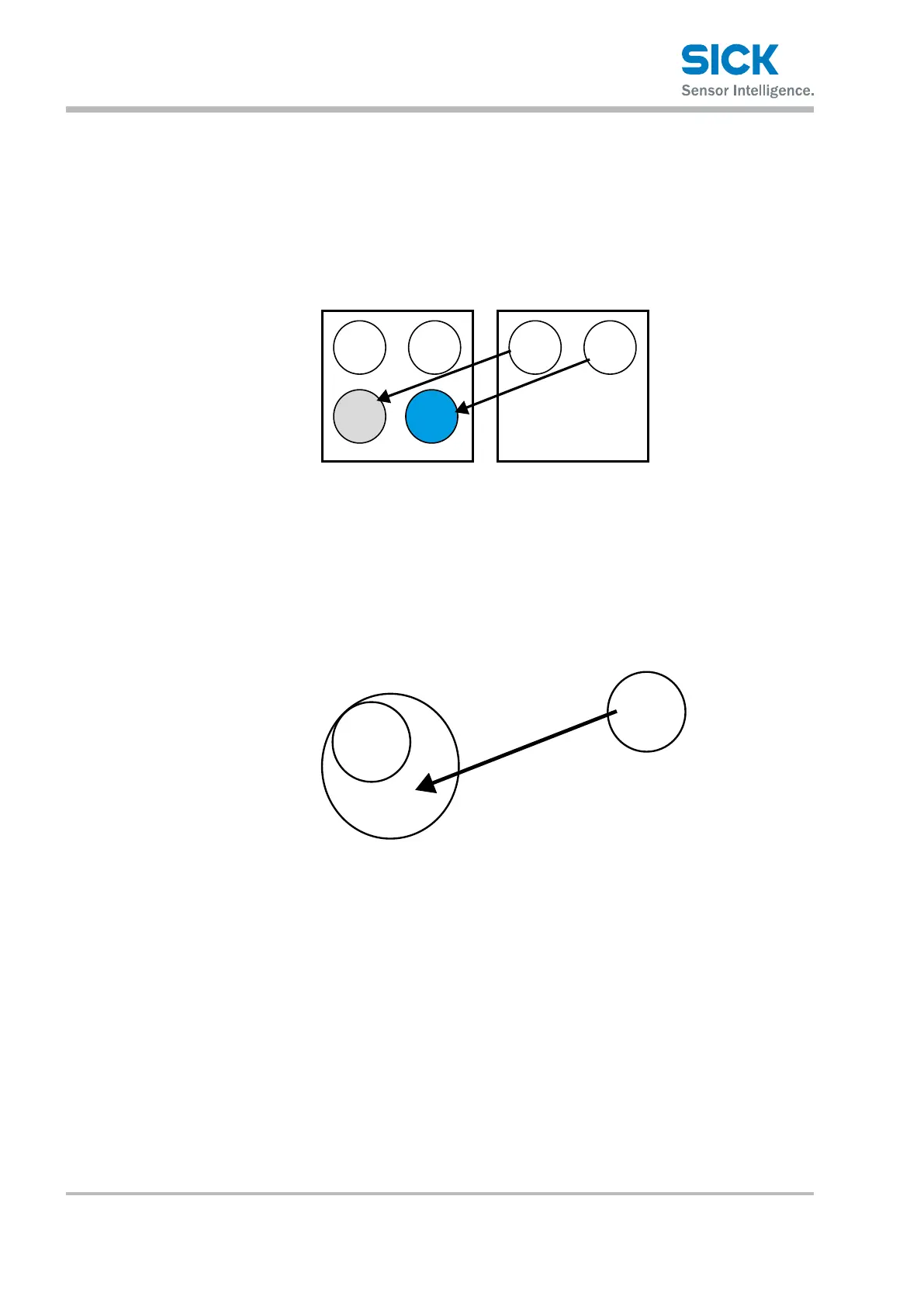Operating instructions Distance measuring device DL100 – CANopen®
CANopen®-interface
116 © SICK AG • Subject to change without notice • 8015416/ZPN2/2017-09-08
Version 1 Ifamanufacturer-specicTPDOistobeused,itmustbemappedtothe
numbercircleofTPDO4(480h+Node-ID).
Ifthemanufacturer-specicTPDO5andTPDO6aretobeused,theTPDOs
must be mapped as follows:
• TPDO5tothenumbercircleofTPDO3(380h+Node-ID)
• TPDO6tothenumbercircleofTPDO4(480h+Node-ID).
406 (Encoder) Profile
TPDO 1 TPDO 2
(SICK) Profile
TPDO 5 TPDO 6
TPDO 4
free
TPDO 3
Note: The number circle of TPDO3 can be used because the DL100 does
not support the object 6008h (High Precision Position Value).
Version 2 Anotheroptionismappingamanufacturer-specicTPDO,e.g.TPDO5,in
thestill-freenumbercircleofTPDO1(180h+Node-ID).
If there are, e.g., 20 participants with the Node-IDs 1 to 20, the TPDO5 can
be mapped to the free number circle of TPDO1. For this, the Node-ID of
the DL100 must be set to 21 (15h) and the COB-ID of the TPDO5 to 195h
(180h+15h=195h).
TPDO 1
TPDO 5
NODE-ID 21
1-20
Version 3 If there are, e.g., 2 participants with the Node-IDs 1 to 20, the TPDO5 can
be mapped to the free number circle of TPDO1. This is possible because
the TPDOs from 5 upwards are no longer bound to the Node-ID.
Example: TPDO5 can be mapped to 183h. Thus, TPDO5 would come from a
virtual Node-ID 3.
Observethat,iftheNode-IDofthedeviceisadierentNode-ID,e.g.6,in
this example, the TPDO with the virtual Node-ID 3 belongs to the device
with the Node-ID 6.

